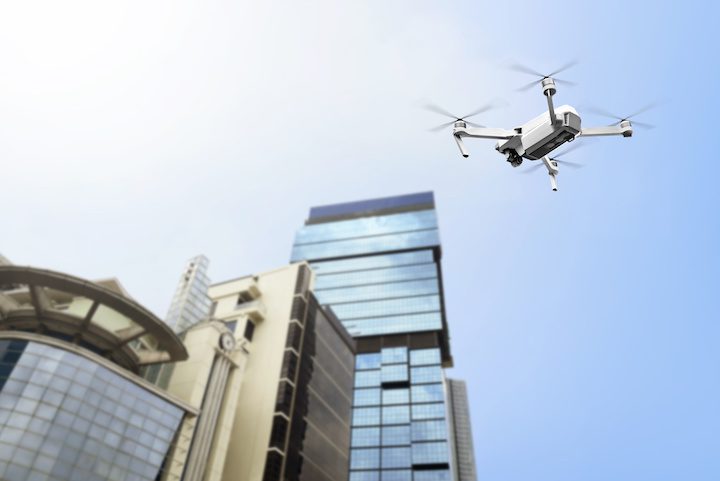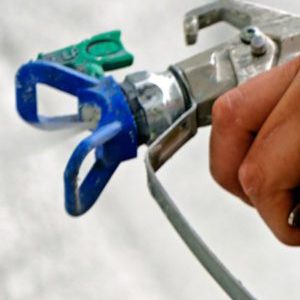Drones are constantly finding new applications and may soon be delivering your pizza or Amazon order. Monitoring building performance is already proving an asset for this technology, in some cases eliminating the need to place building inspectors in unsafe environments.

While the more obvious application is a visual inspection in a difficult-to-access location, building inspections with drones can be a far more high-tech affair, where thermal cameras can be outfitted to monitor heat escaping an HVAC system or leaks in a building envelope, for example. Infrared cameras are also able to determine potential areas of trapped moisture within roof assemblies.
ABJ Renewables maps out how the technology works:
Utilizing the drone allows us to provide images for detailed facade analysis of buildings and structures. The drone is flown in a predefined pattern capturing images of every inch of the structure. These images can then be analyzed by an engineer, site manager, or building inspector safely in an office allowing for a more detailed analysis that can’t be completed in the field. Further the images provide a record to the owner of the structure or building of its current state at the time of the inspection providing invaluable record for insurance purposes and further analysis in the future.
We are also able to produce detailed 3d models of the building, job site, and structure.
The biggest value of this technology comes when substituting visual surveys of entire building facades, which are typically done over a period of weeks by a team of building inspectors, says Keller Engineering. This can now be done over the course of two or three days without the need for swing stage set-up, relocation, and removal. The company notes, however, there are limitations, such as the need to notify nearby building owners and constantly evolving regulatory standards that must be met.
Drones are also of benefit where inspectors are looking at potential structural collapse. Unstable structures can cause numerous injuries, from unsafe framing, old roofing, or unstable support for workers.
Recent software advancements have made sharing results simple. Per ConnexiCore:
It’s possible to generate printable and shareable PDF inspection reports, including the type of issue, status, and the summary associated with the issue in a specific issue report or an entire inspection report. The inspection report includes the map locations of all of the issues so that workers can easily find where each issue is, as well as close-up imagery and all of the issue details they need to address it. This allows inspectors to easily share results with all stakeholders.
With drone technology rapidly evolving and mass adoption still in its infancy stage, it will be fascinating to see what future uses may arise. Business Insider predicts smart drone technology that offers built-in safeguards and compliance, smart accurate sensors and self-monitoring are the next big revolutions that will provide opportunities across multiple sectors.


